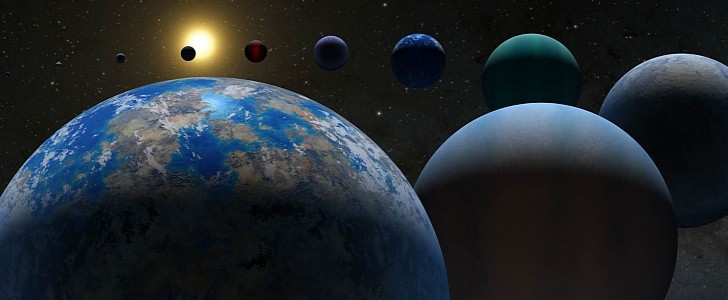For the past three decades, NASA's telescopes have been working overtime, investigating our galaxy. Today, March 21st, the agency announced that these powerful instruments have discovered more than 5,000 different mysterious worlds: some similar to Earth, while others completely different.
The discovery of more than 5,000 planets located beyond our solar system represents an important milestone. Astronomers began hunting these hidden worlds back in 1992. The search started with a type of neutron star that rapidly rotates and emits regular pulses of radio waves – a pulsar. Scientists have discovered planets that orbit around the pulsar by measuring variations in the timing of the pulses.
From there, the number of exoplanets started to grow each year. Just a fraction of the 5,000 planets identified to date includes giants many times larger than Jupiter, "hot Jupiters" that orbit close to their stars, and even "super-Earths," which are planets that resemble our own but are considerably larger.
The Milky Way likely has billions of planets. This is just a small piece of the cosmic puzzle that astronomers have studied. Alexander Wolszczan, the lead author of the paper that revealed the first verified planets outside our solar system 30 years ago, believes that this is just the beginning.
The technology used to search for these celestial objects is rapidly advancing. Launched in 2018, NASA's Transiting Exoplanet Survey Satellite (TESS) is currently hunting down exoplanets that are transiting bright and nearby stars.
And let's not forget about the recently launched James Webb Space Telescope, which is preparing to peer into all phases of cosmic history and uncover the mysteries of the observable universe.
Webb will be followed by the Nancy Grace Roman Space Telescope, which is set to launch in 2027. The telescope will focus on discovering exoplanets by combining different methods. There's also the European Space Agency (ESA) Ariel space telescope, which is set to launch in 2029. Ariel is designed to study the exoplanets' atmospheres.
With all the new tech, Wolszczan says that it's just a matter of time until scientists find a potentially habitable world.
"To my thinking, it is inevitable that we'll find some kind of life somewhere – most likely of some primitive kind," Wolszczan said.
From there, the number of exoplanets started to grow each year. Just a fraction of the 5,000 planets identified to date includes giants many times larger than Jupiter, "hot Jupiters" that orbit close to their stars, and even "super-Earths," which are planets that resemble our own but are considerably larger.
The Milky Way likely has billions of planets. This is just a small piece of the cosmic puzzle that astronomers have studied. Alexander Wolszczan, the lead author of the paper that revealed the first verified planets outside our solar system 30 years ago, believes that this is just the beginning.
The technology used to search for these celestial objects is rapidly advancing. Launched in 2018, NASA's Transiting Exoplanet Survey Satellite (TESS) is currently hunting down exoplanets that are transiting bright and nearby stars.
And let's not forget about the recently launched James Webb Space Telescope, which is preparing to peer into all phases of cosmic history and uncover the mysteries of the observable universe.
Webb will be followed by the Nancy Grace Roman Space Telescope, which is set to launch in 2027. The telescope will focus on discovering exoplanets by combining different methods. There's also the European Space Agency (ESA) Ariel space telescope, which is set to launch in 2029. Ariel is designed to study the exoplanets' atmospheres.
With all the new tech, Wolszczan says that it's just a matter of time until scientists find a potentially habitable world.
"To my thinking, it is inevitable that we'll find some kind of life somewhere – most likely of some primitive kind," Wolszczan said.








